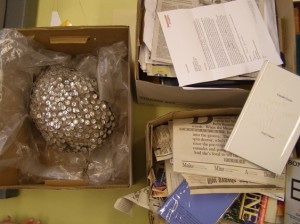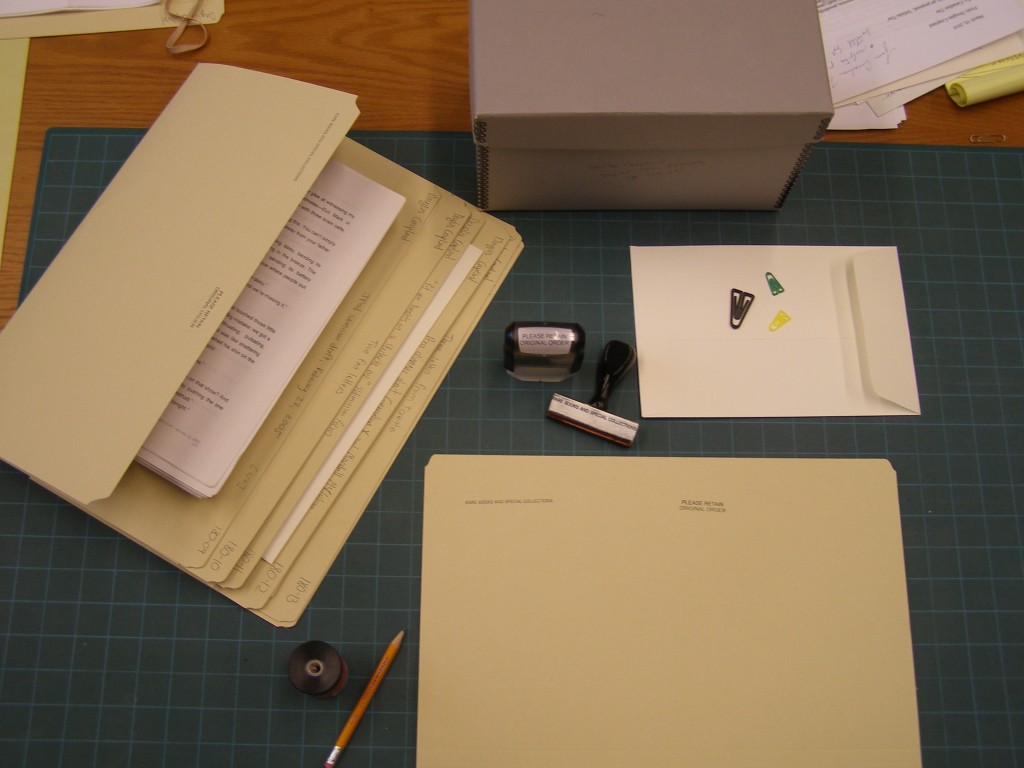Archivist’s note: When you tell people you’re an archivist, they often assume that we spend a lot of time meticulously re-organizing documents into some kind of “correct” order. This is a misconception- as our student archivists will describe below, maintaining original order is actually an important tenet of archival theory and practice. Here are Dan, Laura and Sarah with more:
Perhaps you are wondering what it is we (student) archivists do when a new set of boxes is delivered? What actually goes on in that processing room? And why is it important? If these questions are keeping you up at night, read on for a look at the first step in processing a new accrual….
The first challenge we faced with the Douglas Coupland project was figuring out how to arrange the material. We can’t just dump it into acid-free boxes and call it day! One of the fundamental principles of archival work is respect for original order. This states that records should be organized in the order established or intended by the creator. So no alphabetizing! No rearranging by date!
Why is original order important? In a nutshell, it preserves the relationships between records and any evidence that could be gleaned from those relationships. Context is key.
Determining original order isn’t always easy. Sometimes the intended order gets jumbled before or during the transfer of the material to the archives. Other times, if the creator had no system of arranging their own records, there is no original order. In the case of the former, archivists would spend some time analyzing the material in order to restore the original order. In the latter, archivists could impose an order to facilitate arrangement, description, and access.
Our first order of business was to survey the material in an attempt to discern the original order. This proved difficult. Why? Each box of material appeared to be a veritable mishmash of non-related items. Manuscripts next to a hornet’s nest next to doodles next to fan mail. At first, we thought it might be necessary to impose an order by arranging the material by artistic medium. Upon closer examination and reflection, we could not be sure there wasn’t significance to the apparent random nature of the material. Because we were concerned we would break important archival bonds if we physically (re)arranged the material, we came up with the following solution:
- process the material according to received order (right down to the individual movie ticket stubs)
- using ICA-AtoM (an open-source archival description software), intellectually arrange the material into series based on artistic medium without physically disrupting the physical order
- create a taxonomy within ICA-AtoM to link materials to other related materials
Curious to find out what a taxonomy is? Stay tuned for our next exciting blog post to find out!




[…] Unpacking the Douglas Coupland fonds: The first challenge we faced with the Douglas Coupland project was figuring out how to arrange the […]